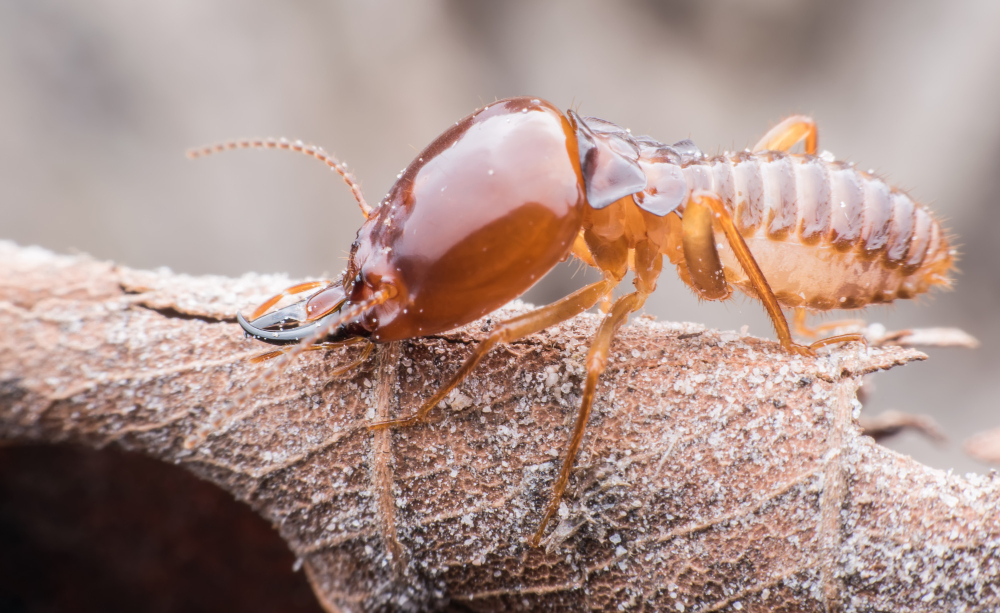Debunking 5 Myths about Termites

Termites might be tiny insects, often no bigger than a grain of rice, but they can wreak havoc on buildings when an infestation is left untreated. But how much of what we know about termites is true? Are they the unstoppable force of destruction that some people fear? Or have misconceptions and myths clouded our understanding of these formidable pests? In this blog, we unravel some common myths, separating fact from fiction.
Myth 1: Termites Are Just Ants with a Different Name
Often, termites are mistaken for ants because of their small size and crawly nature. It is an understandable mistake, but termites are biologically more closely related to cockroaches than ants.
Here are some differences between these two pests for you to tell them apart.
- Termites have a straight body as opposed to the ants’ cinched waists.
- Termites have straight antennae while ants have curved ones.
- Termites have wings that are equal in length but ants have longer front wings when compared to their back wings.
Myth 2: Termites Only Thrive in Warm Climates
Termites are more common in warmer, southern states; hence, this misconception. While it is true that termites prefer warm and humid climates, they can thrive in almost all climates. Termites are present in all states, except Alaska.
Different species of termites have unique adapting mechanisms. For example, subterranean termites create elaborate underground nests that help them burrow deeper to avoid freezing temperatures. Hence, even the northernmost states are not entirely safe from them.
Drywood termites do not need contact with the soil to thrive. They live in furniture and wooden structures. They are common in warmer regions but can get transported to other regions while moving the furniture.
Formosan termites are the most destructive species of termites. They can survive in both subterranean and surface colonies which makes them adaptable to almost all climates.
Myth 3: If You Have a Brick House, You Are Safe from Termites
People think that brick houses are impervious to termite attacks because termites drill only through wood. However, the fact is that termites have other ways of entering brick houses.
Though your home might not be made entirely of wood, there are still several components like wooden frames, flooring, and furniture that are made of wood. Also, thanks to their tiny size, they can squeeze through even the tiniest of cracks to enter your home.
Hence, even if you have a robust brick or cement house, make sure that you schedule regular termite inspections, especially if you live in a place where termite infestation is common.
Also Read: Preventive Termite Inspection - What Is It and How Often Should I Do It?
Myth 4: Neighbour’s Termite Treatment Pushes the Termites into Your House
Termites often live in large colonies. There might be a huge underground subterranean termite colony from which the termites might infest several houses. Your neighbors treating their house for termites might seem to increase termite activity in your house but it is probably because your house was already infested.
Termite treatment does not drive the termites into another house. If you are worried still, it is better to go in for a preventive termite treatment like a liquid termiticide barrier that will keep the termites away from your house.
Myth 5: DIY Treatments Are as Effective as Professional Termite Treatments
In the era of the internet, people come across a lot of DIY termite treatments which lead them to believe that they can handle the infestations on their own. However, termite control is a complex task that is best left to professionals.
Here are the reasons why you should do that.
- Termites are extremely sneaky and hence, you might not know that your house is infested until the problem becomes severe. Regular termite inspections on the other hand will help identify the problem at the earliest.
- DIY treatments might produce temporary results but in reality, you might have just moved the termite infestation to another spot in your house.
- DIY treatments often kill the termites at a particular spot but there is probably still a colony of termites underneath which will continue to damage your house. Termite control professionals are trained to find the root of the infestation to get rid of it completely.
HiTech Termite Control
By debunking these myths, we hope to help you make the right decisions to protect your home. We at HiTech Termite Control provide expert help and comprehensive large-scale and local termite treatments to safeguard your home from these relentless terrors. Contact us today by visiting our website here.
Frequently Asked Questions
1. Are termites and ants the same?
No, termites are not the same as ants. Termites are more closely related to cockroaches and have different body structures, including straight bodies and antennae, while ants have cinched waists and curved antennae.
2. Can termites only live in warm climates?
No, termites can thrive in various climates, including colder ones. Different termite species have adapted mechanisms to survive in different environments, such as subterranean nests to avoid freezing temperatures.
3. Are brick houses safe from termites?
No, even brick houses are not completely safe from termites. Termites can enter through small cracks and infest wooden components like frames, flooring, and furniture.
4. Will my neighbor's termite treatment drive termites into my house?
No, termite treatment does not push termites into neighboring houses. If you notice more termites after your neighbor's treatment, it’s likely because your house was already infested.
5. Are DIY termite treatments effective?
DIY termite treatments are generally not as effective as professional treatments. Professionals can identify and eliminate the root of the infestation, whereas DIY methods might only offer temporary relief.
- Jul 08, 2024
